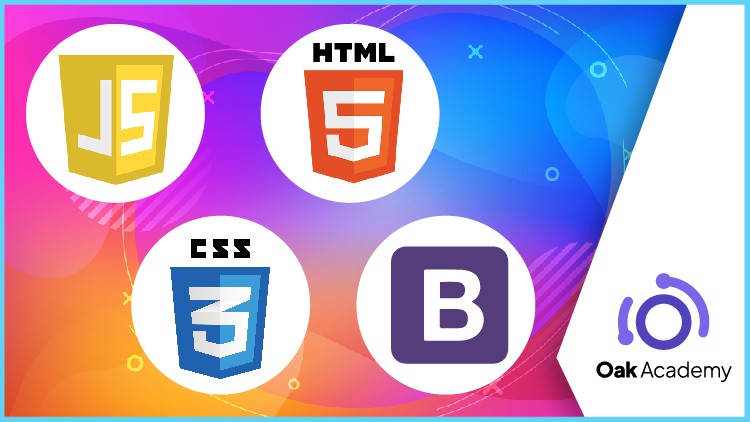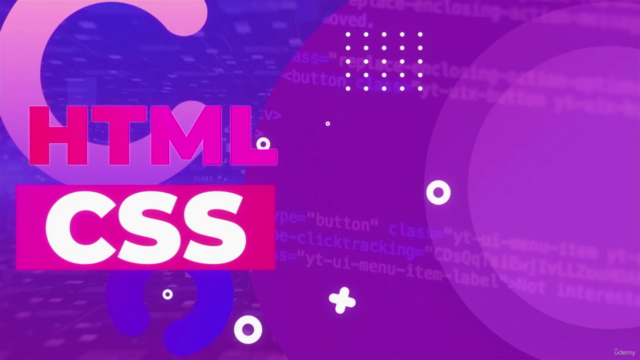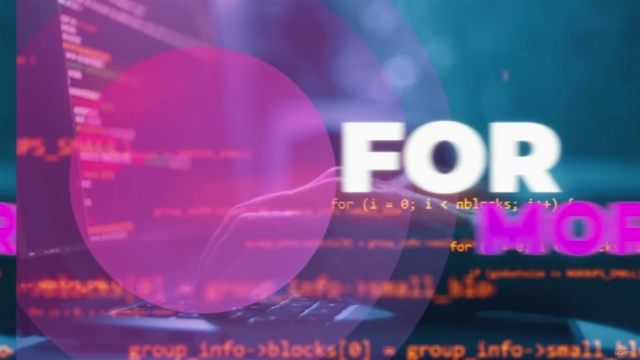Front End Web Development with Javascript HTML CSS Bootstrap

Why take this course?
JavaScript is indeed a versatile and essential language for modern web development, as it enables interactive and dynamic web applications. Here's a brief overview of the concepts and technologies mentioned in your message:
-
JavaScript: A high-level, interpreted programming language that's one of the core technologies of the World Wide Web. As a client-side script, JavaScript can be used to directly influence what the user sees in their browser or, when running on the server-side with Node.js, executing back-end code for tasks such as querying databases.
-
Single Page Applications (SPAs): These are web applications where data is dynamically requested from a web service and then manipulate the DOM to present this new data. Frameworks like React, Angular, and Vue.js facilitate the development of SPAs.
-
React, Angular, and Vue.js: These are popular JavaScript frameworks/libraries that help developers create complex user interfaces efficiently.
- React is a declarative library for building user interfaces, which allows you to build components that manage their own state. It's known for its virtual DOM and one-way data binding.
- Angular is a platform and framework for building single-page client applications using HTML and TypeScript. Angular implements core and optional functionality as a set of separate libraries whereby the most fundamental library,
@angular/core, defines the essential components needed to create an application. - Vue.js is designed from the ground up to be incrementally adoptable, meaning that you can scale existing projects gradually. Vue's reactivity system and component model help you build reactive user interfaces efficiently.
-
JSON (JavaScript Object Notation): A lightweight data-interchange format that is easy for humans to read and write and easy for machines to parse and generate. It's often used in web APIs as a way of exchanging data. JSON is language-independent and can be understood by virtually all programming languages.
-
AJAX (Asynchronous JavaScript and XML): A set of web development techniques based on a combination of document object model (DOM), CSS for styling, and asynchronous data fetching using XMLHttpRequest objects that send and retrieve data from a server asynchronously without interfering with the display and behavior of the existing page.
-
React Native: A framework for building native apps with React. It uses the same design as React, letting you compose a rich interface from declarative components. The framework is cross-platform, allowing developers to share business logic code across both Android and iOS.
-
SPA vs. MPA: A Single Page Application (SPA) loads a single HTML page initially, then builds up the rest of the UI on the client side as needed, often by using JavaScript to dynamically display and manipulate the DOM. In contrast, a Multi-Page Application (MPA) is traditionally built with multiple server-rendered pages that are navigated through hyperlinks or form submissions.
-
JSONP: While JSON (or JSONP before the addition of CORS) was used to circumvent the same-origin policy in web browsers, modern applications should use CORS along with JSON.
-
WebSockets: For real-time communication, WebSockets provide a full-duplex communication channel over a TCP connection.
-
RESTful APIs: REST (Representational State Transfer) is an architectural style for designing networked applications. RESTful services use HTTP requests to GET, PUT, POST, and DELETE data. JSON is commonly used as the data format transmitted with these requests.
-
Node.js: An open-source, cross-platform JavaScript runtime environment that allows developers to run JavaScript code on the server side. It's particularly well suited for building fast, scalable network applications.
By enrolling in a course that covers Front end web development with JavaScript, HTML, CSS, and Bootstrap, you will gain hands-on experience with these technologies and understand how they can be combined to build dynamic and responsive web applications. The course should also cover best practices for code organization, debugging techniques, and performance optimization.
Course Gallery




Loading charts...